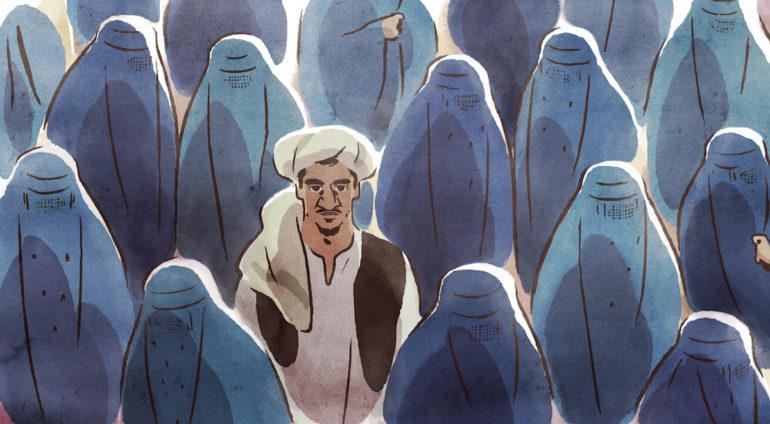Cannes Film Review: ‘The Swallows of Kabul’
By Alissa Simon
LOS ANGELES (Variety.com) – The long-awaited, graphically rich, 2D watercolor-style animation “The Swallows Of Kabul” from French helmers Zabou Breitman and Eléa Gobbé-Mévellec provides an involving adaptation of Yasmina Khadra’s elegant literary fiction. The book, an international bestseller about life under Taliban control in the Afghan capital, highlighted a dangerous act of humanity during a grim and violent time via the stories of two couples whose fates become intertwined through death, imprisonment, and remarkable self-sacrifice. This supplies the core plot of the film, with the action condensed into a tight 81 minutes. Purists may object that the prestige production takes some liberties with novel, but on the whole, the inventions by screenplay writers Sébastien Tavel, Patricia Mortagne, and co-helmer Breitman feel dramatically and poetically right.
The action unfolds in 1998 (as opposed to the novel’s 2001), shortly after the fundamentalist Taliban have come to power. Historian Mohsen (voiced by Swann Arlaud) and artist Zunaira (Zita Hanrot) are still young and in love. They remain hopeful that they will once again be able to live as they choose in their beloved country. In contrast, the despair-filled prison warden Atiq (Simon Abkarian) and his terminally-ill wife Mussarat (Hiam Abbass) live as if they are already dead. Stoic war vet Atiq has seen too much horror in his life and is unable to express to his wife how much she means to him. She, meanwhile, suffers because she can’t fulfill her wifely functions of shopping, cleaning, and cooking, and because she never bore him a child. It’s the characterization of Mussarat that winds up being the most slighted from the condensing of the novel.
Spoiler alert for those who haven’t already read the novel: Zunaira winds up in Atiq’s prison, condemned to death for murder. For the Taliban, the opportunity to execute a woman called for special pomp and ceremony, which the film depicts in chilling scenes. Whether it is the faceless, burqa-clad prostitutes stoned to death by crowds after a sermon by a ranting mullah or those kneeling unfortunates blasted in the back of their heads by a Kalashnikov in a soccer stadium full of VIPs, these scenes may be distanced by the drawings, but are still very difficult to watch.
Co-director Eléa Gobbé-Mévellec, who is also responsible for the overall character and graphic design, earned her stripes as an animator on popular French features such as “Ernest and Celestine” and “The Rabbi’s Cat.” In a way, the delicate aquarelle graphics have a taste of the former, even while evoking a derelict, war-devastated city where turban-clad men race around in Toyota pickups, whipping pedestrians and firing guns simply because they have the power to do so.
As a medium, animation suits this adaptation well; it would have been nearly impossible to shoot as live fiction or on location. Here the drawings communicate quickly what took several pages of description and dialogue to express in the novel, whether it is Mohsen’s memories of better days at the cinema shown as a time-lapse sequence of hand-holding couples in Western clothes or Atiq’s merciless Taliban superior Qassim (Sébastien Pouderoux), as he lolls in a brothel, his long legs pinioning the young girl he is holding on to. Particularly striking are various subjective shots from behind the eye-screen of a burqa, and a climactic scene, in which a man peers into that mesh barrier from the other side, trying to find his wife’s eyes
Marking her fifth feature as director, Breitman, who is also a popular actress and director of television and theater, decided to capture her voice cast during live performance rather than simply as voices standing at a mic. This approach lends extra authenticity to the sound and rhythms of the acting, which will be more difficult to replicate if sold to other territories where dubbing is common. Breitman’s father, Jean-Claude Deret, is especially poignant as an elderly former mullah who despairs of the direction his country is taking.
In addition to the standout work done by a large team of animators, mention should be made of the redolent sound by Eric Devulder, Pascal Villard, Bertrand Boudaud, and Eric Tisserand and the evocative score by Alexis Rault.

